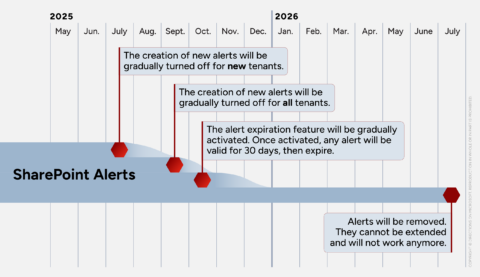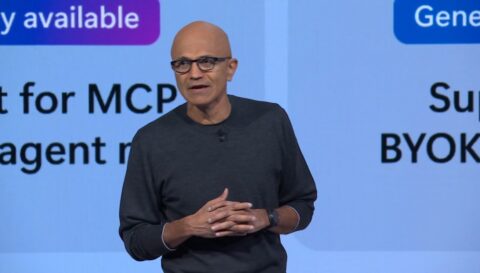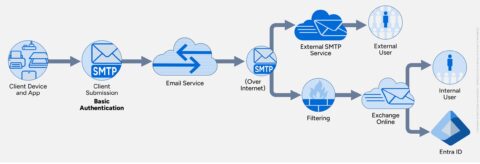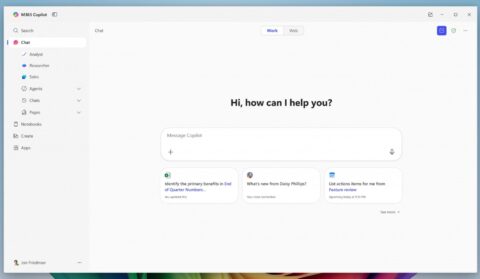Updated: October 2, 2024 (September 27, 2024)
BlogHigh-End Fabric customers win back Dual-Use Rights for Power BI Report Server

Microsoft has quietly relented and added Power BI Report Server dual-use rights for high-end Fabric deployments, restoring a right that was initially removed when the company announced the retirement of Power BI Premium licensing. The reversal will help customers using the dual-use rights avoid a significant budget increase when the migrate to Fabric.
What Is Power BI Report Server?
Before we start, let’s talk about Power BI Report Server. This is a special edition of SQL Server Reporting Services that can host Power BI report alongside the usual Reporting Services reports. Yes, it’s the same Reporting Services product orgs have used for years and could help a company that wants to use Power BI technology but needs to keep some reports close to home for regulatory or performance reasons. Power BI Report Server can even replace an existing SQL Server Reporting Services deployment as long as the customer is willing to accept Power BI Report Server’s quarterly updates.
How It All Started
In Mar. 2024, I wrote about how Power BI customers are being forced into Fabric licensing. At the time Microsoft had just announced the retirement of several Power BI licensing and purchasing options by the end of the year, retirements that will require customers to purchase new Fabric licensing and migrate existing workspaces. (The announcement is here https://powerbi.microsoft.com/blog/important-update-coming-to-power-bi-premium-licensing/; however, Microsoft has changed the wording and removed various sections, along with all comments.)
As part of that announcement, the company said it planned to drop a dual-use right that allowed customers to use a Premium P subscription for both a cloud deployment and to cover the licensing of an on-premises Power BI Report Server. Dropping dual-use rights had a big impact on customers already using the benefit. It meant that when Premium P customers migrated to Fabric, they would have to purchase expensive SQL Server Enterprise edition core licenses with Software Assurance to license their existing Power BI Report Server deployments back.
For a Power BI Report Server licensed for eight vCores that would be an upfront cost of US$60,492 for SQL Server Enterprise and an annual SA subscription of US$15,123. Considering the licenses were already included in a Premium P1 subscription that cost customers US$60,000 per year, this would result in costs more than doubling for the first year and a 25% increase for subsequent years. Not a minor change.
A Bogus Claim
In the original announcement, Microsoft justified the removal of dual-use rights by saying “Fabric capacity is not compatible with Power BI Report Server.” The incompatibility claim was always suspicious because licensing Power BI Report Server with the dual-use right was just a matter of paperwork, not technology. The server never required a connection to the Power BI service, exchanged data, or had any other technical dependency or limitation.
Perhaps Microsoft was trying to claim that Fabric Capacity Units (CUs) were not compatible with Power BI Report Server core counts, but that does not make sense either. Microsoft officials went out of their way to show how Fabric CUs map to Power BI Premium vCores so that customers could understand which Fabric SKU to purchase. https://learn.microsoft.com/en-us/fabric/enterprise/licenses#capacity
Regardless of the original justification, it appears enough customers called foul that Microsoft quietly changed its position.
Going Forward
The way Power BI Report Server dual-use rights are implemented for Fabric appears to be the same as for Power BI Premium P with some nuances added to address the way Fabric is purchased. I say appears, because some of the licensing details are still incomplete.
What we do know is that high-end Fabric capacities (F64 and higher) that are purchased using capacity reservations have dual-use rights, and customers can use the equivalent vCore counts to cover Power BI Report Server deployments. The number of vCores provided with each Fabric SKU are not specified in the licensing details; however, it seems logical that the number of vCores will be based on the Fabric CU to Power BI vCore table I mentioned above, which coincides to how Premium P provided dual-use rights:
- F64 = 8 vCores
- F128 = 16 vCores
- F256 = 32 vCores
- F512 = 64 vCores
- F1024 = 128 vCores
- F2048 = 256 vCores.
Customers currently using the dual-use rights contact their Microsoft representative before migrating to Fabric and get the specific vCore count details in writing to ensure they are covered for the duration of their volume licensing agreement.
Related Resources
Power BI Report Server licensing in Licensing Reference Set (Directions members only)
Fabric in the Database, Analytics, and AI/ML Roadmap (Directions members only)
Power BI in the Database, Analytics, and AI/ML Roadmap (Directions members only)
















